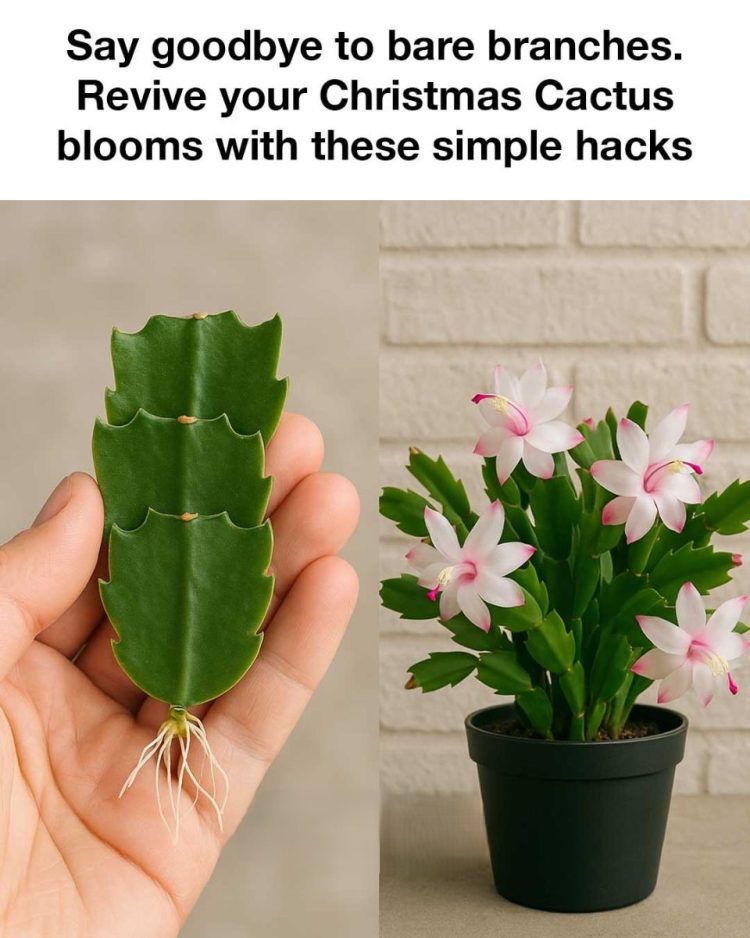The Christmas Cactus, with its vibrant blooms and unique foliage, is a beloved holiday plant that can bring cheer to any home. However, many plant enthusiasts find themselves frustrated when their Christmas Cactus refuses to bloom, leaving them with bare branches instead of the expected cascade of flowers. Fear not, as reviving your Christmas Cactus blooms is easier than you might think. With a few simple hacks and a bit of patience, you can transform your plant into a festive spectacle.
Understanding the needs of your Christmas Cactus is the first step in ensuring it thrives. This plant, native to the tropical rainforests of Brazil, requires specific care to mimic its natural habitat. By providing the right conditions, you can encourage your Christmas Cactus to produce an abundance of blooms, turning it into the centerpiece of your holiday decor.
1. Understanding Your Christmas Cactus
The Christmas Cactus, scientifically known as Schlumbergera, is not your typical desert cactus. It thrives in a humid, forested environment, which means it requires different care than its desert cousins. Understanding this distinction is crucial for successful blooming. The plant has flat, segmented stems that can grow up to 12 inches long. These segments are where the flowers will eventually bloom, so keeping them healthy is essential.
Unlike desert cacti, the Christmas Cactus prefers a more humid environment with indirect light. It is an epiphytic plant, meaning it grows on other plants in its natural habitat, absorbing moisture and nutrients from the air and rain. This unique growth habit means that the Christmas Cactus requires a well-draining soil mix and regular watering to thrive.
2. The Importance of Proper Lighting
Lighting plays a critical role in the blooming process of a Christmas Cactus. These plants prefer bright, indirect light, which mimics the dappled sunlight they would receive in their native rainforest environment. Direct sunlight can scorch the leaves, so it’s important to find a balance. A north or east-facing window is ideal, where the plant can receive ample light without the risk of sunburn.
During the fall, when you want to encourage blooming, it’s important to provide your Christmas Cactus with about 12-14 hours of darkness each day. This period of darkness is crucial for triggering the blooming cycle. You can achieve this by placing the plant in a dark room or covering it with a cloth during the evening hours.
3. Watering Techniques for Optimal Growth
Watering your Christmas Cactus correctly is key to its health and blooming potential. Unlike desert cacti, the Christmas Cactus prefers its soil to be kept slightly moist, but not waterlogged. Overwatering can lead to root rot, while underwatering can cause the plant to become dehydrated and stressed.
During the growing season, water the plant when the top inch of soil feels dry to the touch. In the fall and winter, reduce watering slightly to encourage blooming. It’s best to use room temperature water and ensure that the pot has adequate drainage to prevent water from sitting at the bottom.
4. Choosing the Right Soil Mix
The right soil mix is crucial for the health of your Christmas Cactus. These plants require a well-draining soil to prevent root rot and allow for proper aeration. A commercial cactus or succulent mix is a good starting point, but you can also create your own mix by combining two parts potting soil with one part perlite or sand.
This mix will ensure that excess water drains away quickly, while still retaining enough moisture for the plant’s needs. Additionally, adding some organic matter, such as peat moss, can help retain moisture and provide nutrients.
5. The Role of Temperature in Blooming
Temperature is another important factor in encouraging your Christmas Cactus to bloom. These plants prefer cooler temperatures in the fall to trigger the blooming process. Aim for nighttime temperatures between 50-55°F (10-13°C) for about six weeks before you want the plant to bloom.
During the day, keep the temperature slightly warmer, but avoid placing the plant near drafts or heat sources, which can cause stress. Once buds have formed, you can gradually increase the temperature to encourage the blooms to open.
6. Fertilizing Your Christmas Cactus
see continuation on next page
